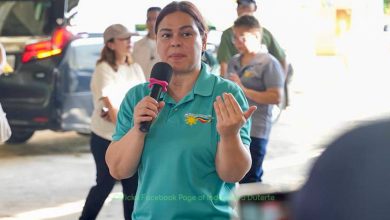Improved facilities and enhanced security are the major achievements at the Ninoy Aquino International Airport (NAIA) in 2018.
Manila International Airport Authority (MIAA) General Manager Ed Monreal said that among the improvements at the airport is the completion of the rapid exit taxiways, reported Philippine News Agency (PNA).
Two new rapid exit taxiways were opened at the NAIA on September 10 helping the aircraft to exit faster and transit to the four terminals of the airport.
Monreal underscored that the rapid exit taxiways save time (aircraft movements per hour), since the aircraft would not need to wait or traverse the whole length of the runway, and just take the taxiway to exit.
There are now four taxiways at the NAIA — two that could accommodate small aircraft like the A320, and the other two that could accommodate larger wide-bodied aircraft.
Another improvement is the replacement of passengers’ boarding bridges.
The first phase of glass aerobridge installation began at NAIA Terminal 1 last June. The new glass aerobridges are equipped with CCTV cameras and are designed with programmable motor controller, ground power unit (GPU)-ready, and are airconditioned.
Monreal also emphasized that the management has started the improvements in the security system at the NAIA this year.
“We already have more than 20 x-ray machines. We’re starting to replace the old ones. It’s an additional requirement (in the international aviation standards),” he said.
Monreal explained that based on the International Civil Aviation Organization’s (ICAO) standards, single view x-ray machines can no longer be used at the airports.
“So, we have already started installing double view x-ray machines. MIAA would still need to purchase about 62 x-ray machines for the initial and final checks at the NAIA,” he said.
Monreal said some other improvements include the improved ramp signages, and that the overlay is almost complete.
In terms of providing security at the airport, Grifton Medina, Immigration Port Operations Division chief, mentioned the following, which he considers major accomplishments in 2018:
Installation of e-gates
An electronic gate (e-gate) only takes about 8-15 seconds to process the entry of a passenger. This helps in reducing the long queues at immigration counters and faster processing.
The country now has 21 e-gates in major airports. Five each were installed in NAIA Terminals 1 and 3, three in NAIA Terminal 2, three each in Cebu and Clark, and two in Davao.
“These (e-gates) are unmanned and takes only about one-third of the usual processing time (at the immigration counters),” Medina said.
Tightened security
“We conduct continuous training and inter-agency coordination with other countries or interpol (international police),” he added.
Medina explained that the Bureau of Immigration (BI) is connected 24/7, live, with the Interpol.
“For example, if a person has a record in another country, or if he or she is a suspect terrorist, his or her name would automatically hit our system. That means the person could be prevented from entering the country,” he said.
For three years now, the Philippines has retained the Tier 1, which is the highest level of security, according to Medina.
“Tier 1 indicates the highest security level in terms of the country’s campaign against human trafficking. That means we are very strict, and we implement what’s in the regulations. The Philippines is the only country in the ASEAN region that has the Tier 1 status,” he added.
Technical improvements in the system
Using a state-of-the-art system enables immigration officers to protect those who are going out of the country, Medina said. Through this system, immigration officers are able to protect the people by checking stolen passports and counterfeit documents.
Immigration officers undergo a quarterly training on documents analysis, he said, adding that this skill is really essential to an officer.
Passengers may expect continuous improvement in the airport’s facilities, he added.
For Medina’s part, he said passengers can look forward to seeing “more professional” immigration officers at the NAIA. “We’d like to see the happiness in every passenger,” he said.
Also in 2019, Medina said more e-gates will be purchased, and these will be primarily be installed at the NAIA.
Medina said he eyes an additional 20 to 40 e-gates in the country’s major airports by next year.



